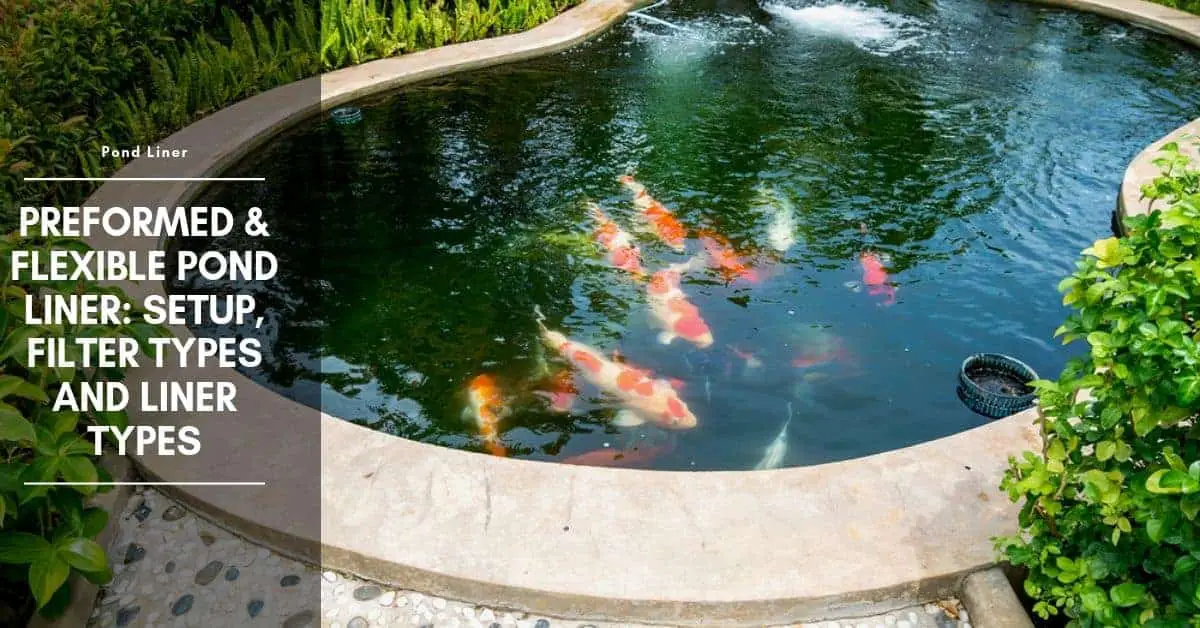A carefully chosen and well-designed pond types can be the focal point of a garden, but finding the right style can be a daunting task. The choice of design is partly personal, but should also take into account the requirements of the fish, as well as the amount of space you have available, the existing landscaping in your garden, your level of building expertise, and the amount of time and money you have to spend.
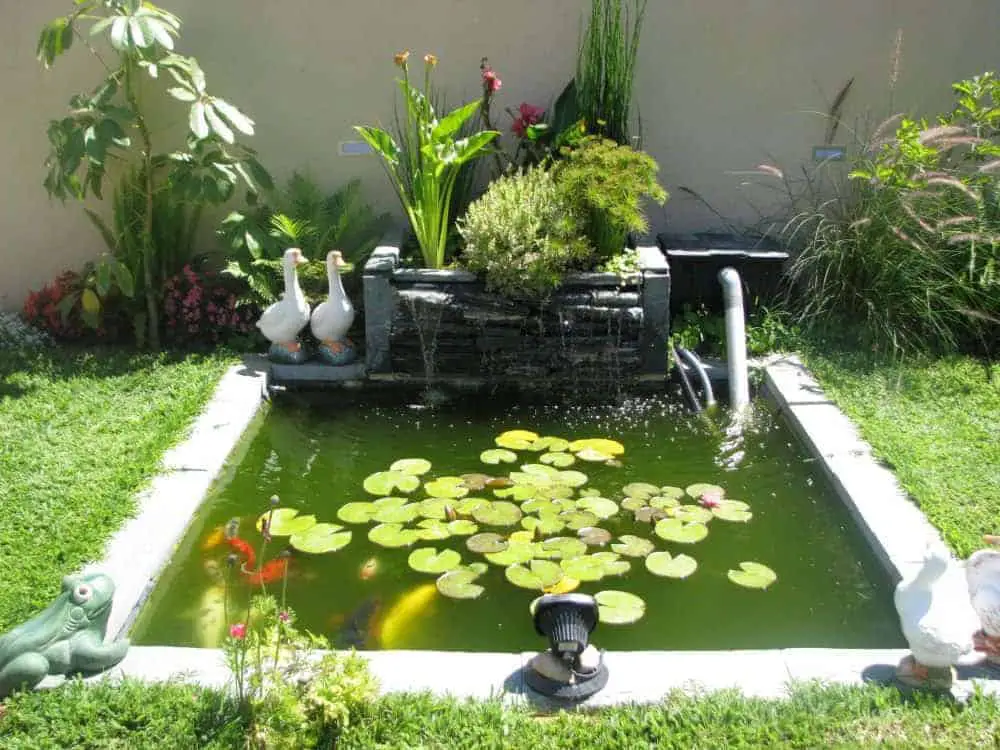
Types of pond and design
Although the basic construction techniques used to create ponds of any type are similar, the resulting effect created by the landscaping and planting can be strikingly different. Ponds can be designed in an informal, naturalistic way, or in a formal style, based on stark, geometric patterns, such as rectangles.
A good starting point when deciding on the type of pond to build is to consider the species of fish you would like to keep. Goldfish are suitable for most types of ponds, but large pond fish, such as koi, require a considerable volume of water if they are to thrive. A pond for these fish must have a minimum surface area of at least 100 ft² (10 m² ).
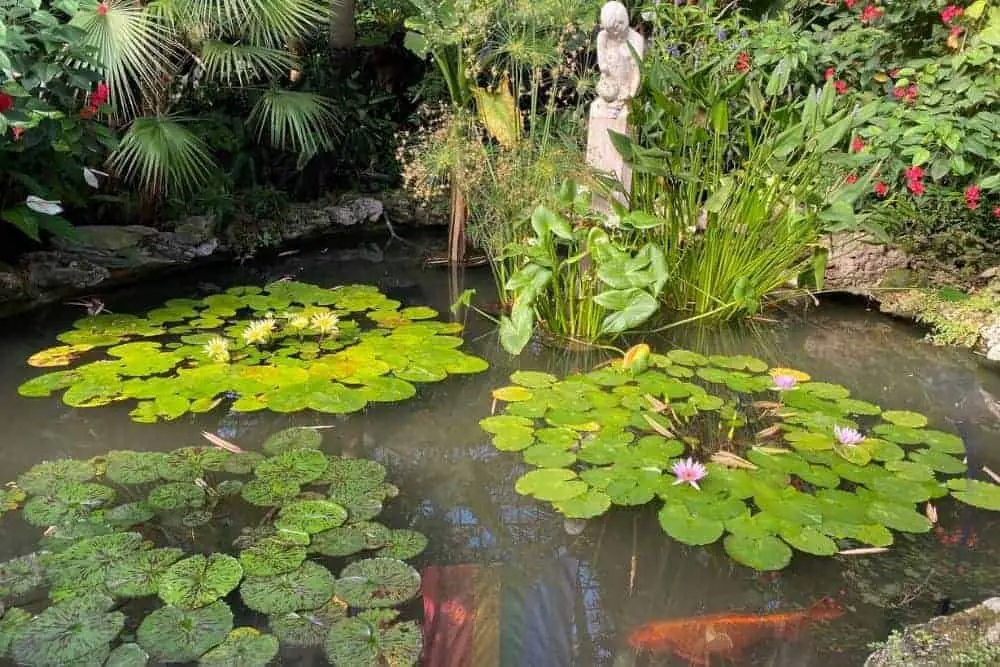
The constraints created by keeping koi mean that they are invariably kept in a larger formal design of the types of pond. Such ponds are costly to construct, however, not just because they need to be large, but also because they require an effective filtration system to maintain water quality and clarity.
Naturalistic ponds are simple and inexpensive to create using a flexible pond liner. At certain times of the year, however, the fish may not be particularly conspicuous in this type of pond; during early summer, for example, the water may be green with algae and the pond partially covered with profuse plant growth. A filtration system is less essential in a pond of this type, but regular maintenance is required to remove dead plant material and clean out silt.
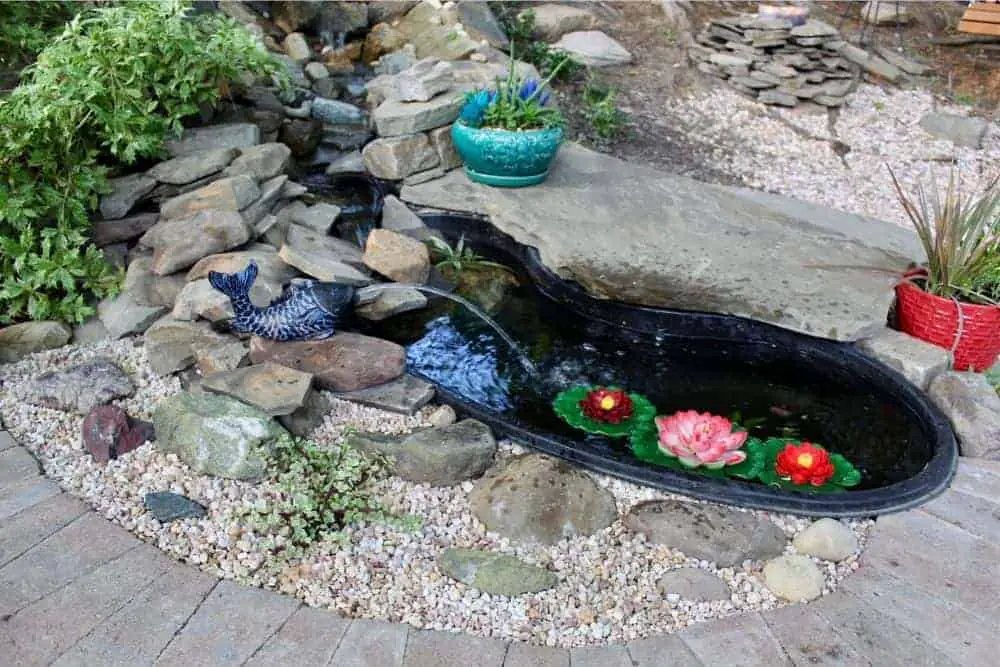
Depth is an important consideration, especially in temperate areas. Fish instinctively retreat to the bottom of a pond as the temperature drops toward freezing. Ponds should, therefore, include an area that is at least 4 ft (1.2 m) deep, to ensure that it will not freeze to the bottom in even the most severe winters.
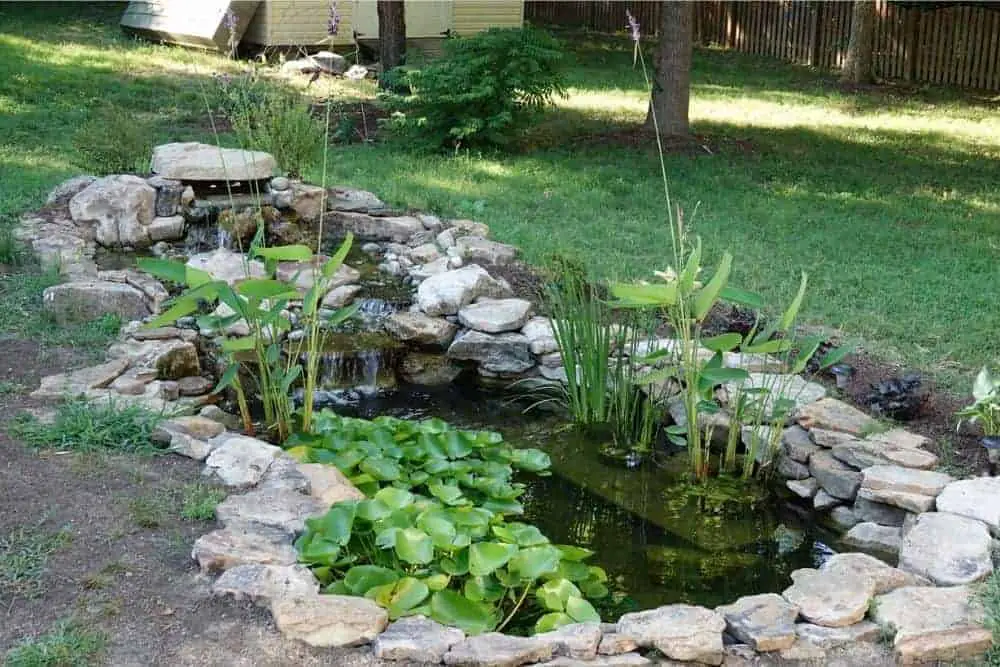
Construction choices
Flexible pond liner or preformed?
The availability of modern pond construction materials provides a wide choice for the hobbyist. Creating a pond using a Galvanized tank or a flexible pond liner or installing a preformed pond unit does not require advanced construction skills and can be relatively inexpensive. Large concrete ponds, by contrast, are considerably more expensive, and may even require the services of a professional installer.
What is the best material for a pond liner?
A wide range of flexible liners and preformed pond units are available to suit most budgets, but it can be a false economy to purchase the cheapest option. Less expensive liners, such as polyethylene, may not last as long as higher quality flexible liners, such as PVC and butyl rubber, which are more resistant to attack by the ultraviolet component of sunlight. Butyl rubber is probably the best material to choose, partly because it is very elastic and so will not crease as much during installation as other materials.
A PVC pond liner is a somewhat cheaper option, with a correspondingly shorter life-span; if choosing PVC, select a thicker grade, typically 1 mm, with a reinforcing nylon weave providing extra strength and durability. Preformed pond units are also available in a range of materials, of which rubberized versions are generally the most durable.
Flexible pond liner is sold by the square foot, in rolls of various widths, so careful planning is required to be sure you purchase sheeting of the correct dimensions. The amount of liner required is easily determined for any shape of the pond using the following method. First, determine the length of the pond at its longest point and the width at its widest point.
Next, adjust these dimensions to allow for sufficient liner to fit into the deepest part of the pond: to do this, multiply the maximum depth of the pond by two, and add this to both the length and width figures respectively. Finally, add a further 18 in (45 cm) to each dimension to provide extra liner to overlap the edge of the pond; the final figures give you the overall width and length of liner required.
Pond filter and pump
Backyard ponds are regularly stocked with much more fish than would be found in different types of natural ponds, and so benefit from the addition of a filtration system to improve water quality. This is particularly correct for koi ponds, wherever crystal-clear water is desirable to give the best look of the colors and patterns of the fish. Filtration systems are made by electric pumps, which can also be applied to create fountains and water features.
How does pond filter work?
The pump is a critical component of a filtration system, providing the power to force the water through the filter unit. All designs of pumps, from submersible units to more powerful surface models, work on a similar principle: an electric motor draws water through the unit and expels it through an outlet. Most pumps are equipped with a pre-filter – ranging from sieve-type fixtures to foam-sponge attachments – which helps to prevent debris in the pond from entering the pump unit and causing a blockage.
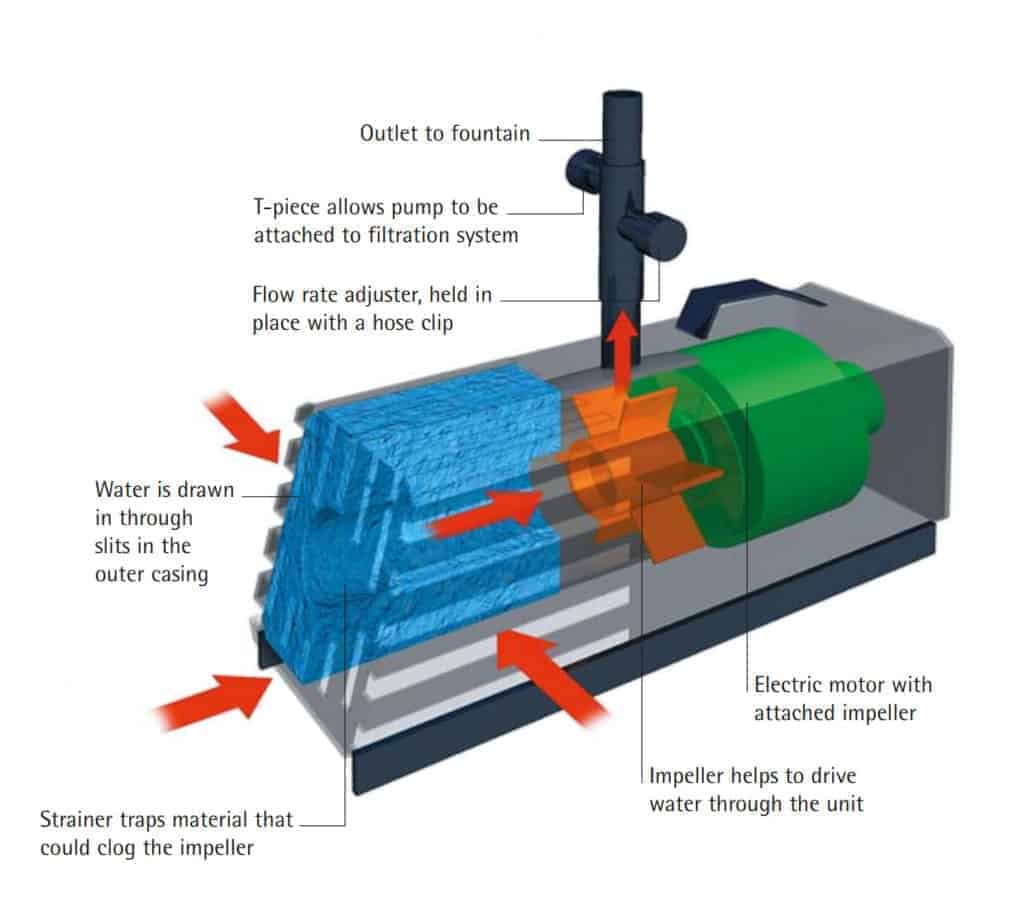
Pond filtration systems work on the same principles as aquarium filters, albeit on a much larger scale. Water from the pond is passed through an internal or external filter unit that contains layers of filtration media. These can include brushes or layers of filter foam of different grades that sieve particulate matter from the water and also serve as biological filtration media, on which beneficial bacteria can grow. The bacteria break down ammonia produced by the fish, as well as other waste matter.
Having passed through the media, the clean water then returns to the pond via the outflow or can be run through a further series of filters to maximize the water quality. Check the filter flow rate and water quality regularly; any drop suggests that the filter needs cleaning. When cleaning a pond filter, always wash the media in dechlorinated or pond water, to safeguard the bacterial population. In a new pond, it will take time for beneficial bacteria to develop in the filter. To make sure ammonia does not build up to dangerous levels, add zeolite – a compound that removes ammonia from water to the filter.
Typical pond setup
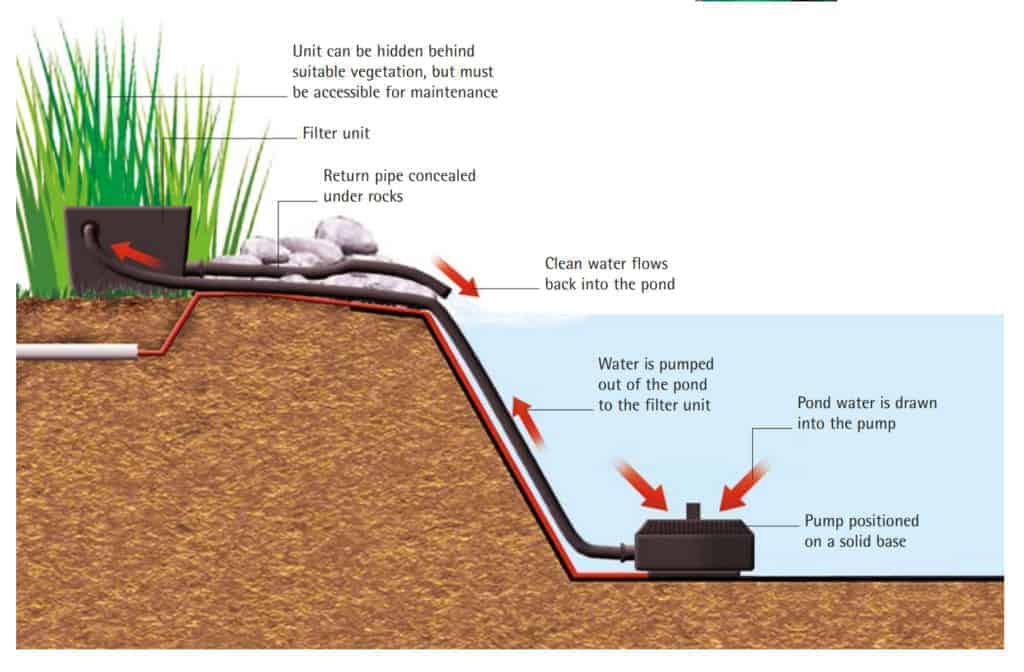
A typical pond setup uses a submersible pump to supply an external filter by the waterside. Pumps that are used for passing water through a filtration system should be robust enough not to become choked by debris from the pond. If sufficiently powerful, a pump can be employed to operate a waterfall or fountain in addition to supplying the filtration system.

Hi, my name is Sean, and I’m the primary writer on the site. I’m blogging mostly about freshwater and saltwater aquariums, fish, invertebrates, and plants. I’m experienced in the fishkeeping hobby for many years. Over the years I have kept many tanks, and have recently begun getting more serious in wanting to become a professional aquarist. All my knowledge comes from experience and reading forums and a lot of informative sites. In pursuit of becoming a professional, I also want to inspire as many people as I can to pick up this hobby and keep the public interest growing.
Read more about Sean.
Please join also my Facebook group.

